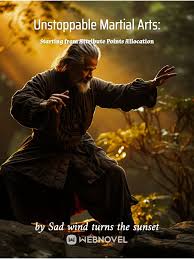v3 Chapter 422: The layout of the Dutch army
Using bicycles to help infantry move quickly is a very good solution. In World War II, when the Japanese-Japanese raided the British colony of Malaysia-Malaysia, this method was used to follow the chariot troops. The British army in Malaysia was frightened when the Japanese-military was riding a bicycle.
William IV asked the Minister of the Interior Jonrell: "What is the most important army mobile xing tool in the Netherlands now?"
"cavalry"
"Yes, cavalry is the most important army tool in Europe for hundreds of thousands of years, but horses are notoriously difficult to get, and they also need corresponding cavalry"
William IV especially remembered that in the early days of World War II, when the German army invaded Poland, France and other countries, the level of mechanization in Germany was relatively low, and the mobility of the troops was relatively poor. In the eyes of the Purcell Peace Treaty, the resources of the German army were limited, especially in terms of mobility. In the early days of the war, the actions of the German army were often solved by walking.
But the Germans at that time also knew that you couldn't do this. How could the troops be able to slow down when they were fighting? Therefore, the Germans also tried every means to increase the mobility of the troops, and tried their best to add mobility to the starting price of the troops that could add mobility.
And limited by the number of cars produced and the stock of fuel at that time, this forced the German army to add some non-motorized vehicles to participate in the war, such as mules and horses, such as bicycles.
"Therefore, riding a bicycle is easier to operate than riding a horse"
William II to the War Minister Pate. De Jong asked: "How is the current Dutch cycling army planned?"
German bicycles can be traced back to the early days of World War I, and the Germans under Wilhelm II also knew that cycling was always faster than running.
"The Netherlands currently has a bicycle brigade in every light infantry division in the Far East. The Dutch army is currently divided into a squad of about 10 people, three squads make up a platoon of about 30 people, and three platoons plus cooks. There are about 110 correspondents, commissars, deputy platoon leaders, platoon leaders, instructors, pastors, and so on.
Three companies form a battalion of about 400 people, a regiment of 1,300 people, a brigade of about 4,000 people, and a division of about 7,500 to 10,000 people. A regiment of about 30,000 people.
The Netherlands has two armies of 60,000 people, 30,000 conscripts, and another 30,000 indigenous troops deployed in the mainland.
More than 120,000 troops are deployed in the mainland to defend the mainland.
The Navy has more than 20,000 people in the Atlantic, a total of 140,000.
The Far East also has a navy with more than 30,000, an army with 60,000, and an indigenous army with more than 30,000, totaling 140,000.
In the Alaska Peninsula, there are 5,000 troops and 2,000 navy personnel.
The Hawaiian Islands also have a 5,000-strong army and a 3,000-strong navy.
A total of 15,000 people.
More than 10,000 navies are deployed in Madagascar with Mozambique, Tanzania and Kenya, and more than 5,000 in the mouth of the Congo River.
Madagascar has more than 20,000 Dutch troops and more than 30,000 indigenous troops.
The first generation of indigenous troops in Congo and Tanzania and Kenya also exceeded 30,000, and the Dutch army also exceeded 30,000.
This is the deployment of 400,000 Dutch troops. "
"This deployment can be considered in place, but is the local indigenous army still stable?"
I have to say that William IV is also a common problem for future generations, and people who are not of our race will have different hearts. Although this sentence is vulgar, it is very appropriate.
What's more, in William IV's psychology, it is still unknown whether these natives will follow the wave of self-reliance in the future, and whether they can withstand provocation. Therefore, what William IV is doing at present, In fact, they are slowly and subtly shifting, gradually transferring these people to Africa.
Even if many Dutch nobles are worried, if there is a mutiny one day, the Netherlands will set up a country in Africa for them. As for the Far East and the Australian mainland, it is not necessary to think about it.
Of course, these are all concessions made in the last step.
It is still far from the time of that crisis.
"Bicycle participation is a good thing. It can be used for reconnaissance and communication on a large scale. This bicycle is good. It doesn't need to eat food, drink water, and it doesn't need special troops. Moreover, many people directly ride a bicycle. Yes, if you are riding a horse, many people have to learn it now, and they may not be able to control it.”
The Dutch military chief of staff Mark After Lü De sighed, he said seriously: "Actually, when I first became prime minister a few years ago, I already realized that the future war in Europe will require very high mobility of the army, and the traditional combat concept of weapons must be used. The mobility of the army must be increased to the greatest extent possible, the Netherlands must move quickly when the army is fighting, the army must reach the theater quickly and enter the battle quickly.”
He pointed out that the first brigade of each infantry division must be equipped with a bicycle regiment, and each regiment must have a combat reconnaissance unit, either with horses or bicycles, but horses are indeed too difficult to handle, especially in Africa. There are many deserts, and it is difficult for horses to transfer. It is also hard work to raise horses in the tropical zone of the Far East. Bicycles are much easier in this regard.
Therefore, I suggest that the infantry brigade to the regiment to the grass-roots company are all issued with bicycles.
William IV later began to take a serious look at how the current bicycles in the Netherlands were compiled.
Mark Rued told him that Europe remains unchanged. Currently, the reconnaissance battalion of the Dutch Far East Infantry Division consists of a battalion headquarters, a bicycle company, a cavalry company, as well as a heavy weapons platoon and a communications platoon.
Even many cavalry companies in the Far East have been replaced by bicycle companies.
A bicycle infantry platoon consists of three squads, each squad has a squad leader and a deputy squad leader, a seven-person rifle group, and a four-person machine gun group.
As for the machine gun, the Dutch Ministry of Defense has obtained the American r. J Gatling's 1862 patent for the multi-barreled hand-cranked machine gun.
In 1864, the Netherlands had already started to produce its own machine guns and had its own machine gun production factories.
After many transformations, in 1866 Nantes M., a professor of mechanics at the Royal Netherlands Academy of Sciences On the basis of him, Maxim developed the 11.43 mm Maxim heavy machine gun, which was the first machine gun in the world to use the energy of gunpowder and gas to complete the design cycle, which immediately caused a sensation in the world.
Before the defeat of Germany in later generations, the German People's Bombardment Division also included bicycle companies and bicycle battalions. Most of these bicycle companies were used as reconnaissance troops, and some were used as combat troops. After all, it is faster to go to the war zone by bicycle.
William IV asked the Minister of the Interior Jonrell: "What is the most important army mobile xing tool in the Netherlands now?"
"cavalry"
"Yes, cavalry is the most important army tool in Europe for hundreds of thousands of years, but horses are notoriously difficult to get, and they also need corresponding cavalry"
William IV especially remembered that in the early days of World War II, when the German army invaded Poland, France and other countries, the level of mechanization in Germany was relatively low, and the mobility of the troops was relatively poor. In the eyes of the Purcell Peace Treaty, the resources of the German army were limited, especially in terms of mobility. In the early days of the war, the actions of the German army were often solved by walking.
But the Germans at that time also knew that you couldn't do this. How could the troops be able to slow down when they were fighting? Therefore, the Germans also tried every means to increase the mobility of the troops, and tried their best to add mobility to the starting price of the troops that could add mobility.
And limited by the number of cars produced and the stock of fuel at that time, this forced the German army to add some non-motorized vehicles to participate in the war, such as mules and horses, such as bicycles.
"Therefore, riding a bicycle is easier to operate than riding a horse"
William II to the War Minister Pate. De Jong asked: "How is the current Dutch cycling army planned?"
German bicycles can be traced back to the early days of World War I, and the Germans under Wilhelm II also knew that cycling was always faster than running.
"The Netherlands currently has a bicycle brigade in every light infantry division in the Far East. The Dutch army is currently divided into a squad of about 10 people, three squads make up a platoon of about 30 people, and three platoons plus cooks. There are about 110 correspondents, commissars, deputy platoon leaders, platoon leaders, instructors, pastors, and so on.
Three companies form a battalion of about 400 people, a regiment of 1,300 people, a brigade of about 4,000 people, and a division of about 7,500 to 10,000 people. A regiment of about 30,000 people.
The Netherlands has two armies of 60,000 people, 30,000 conscripts, and another 30,000 indigenous troops deployed in the mainland.
More than 120,000 troops are deployed in the mainland to defend the mainland.
The Navy has more than 20,000 people in the Atlantic, a total of 140,000.
The Far East also has a navy with more than 30,000, an army with 60,000, and an indigenous army with more than 30,000, totaling 140,000.
In the Alaska Peninsula, there are 5,000 troops and 2,000 navy personnel.
The Hawaiian Islands also have a 5,000-strong army and a 3,000-strong navy.
A total of 15,000 people.
More than 10,000 navies are deployed in Madagascar with Mozambique, Tanzania and Kenya, and more than 5,000 in the mouth of the Congo River.
Madagascar has more than 20,000 Dutch troops and more than 30,000 indigenous troops.
The first generation of indigenous troops in Congo and Tanzania and Kenya also exceeded 30,000, and the Dutch army also exceeded 30,000.
This is the deployment of 400,000 Dutch troops. "
"This deployment can be considered in place, but is the local indigenous army still stable?"
I have to say that William IV is also a common problem for future generations, and people who are not of our race will have different hearts. Although this sentence is vulgar, it is very appropriate.
What's more, in William IV's psychology, it is still unknown whether these natives will follow the wave of self-reliance in the future, and whether they can withstand provocation. Therefore, what William IV is doing at present, In fact, they are slowly and subtly shifting, gradually transferring these people to Africa.
Even if many Dutch nobles are worried, if there is a mutiny one day, the Netherlands will set up a country in Africa for them. As for the Far East and the Australian mainland, it is not necessary to think about it.
Of course, these are all concessions made in the last step.
It is still far from the time of that crisis.
"Bicycle participation is a good thing. It can be used for reconnaissance and communication on a large scale. This bicycle is good. It doesn't need to eat food, drink water, and it doesn't need special troops. Moreover, many people directly ride a bicycle. Yes, if you are riding a horse, many people have to learn it now, and they may not be able to control it.”
The Dutch military chief of staff Mark After Lü De sighed, he said seriously: "Actually, when I first became prime minister a few years ago, I already realized that the future war in Europe will require very high mobility of the army, and the traditional combat concept of weapons must be used. The mobility of the army must be increased to the greatest extent possible, the Netherlands must move quickly when the army is fighting, the army must reach the theater quickly and enter the battle quickly.”
He pointed out that the first brigade of each infantry division must be equipped with a bicycle regiment, and each regiment must have a combat reconnaissance unit, either with horses or bicycles, but horses are indeed too difficult to handle, especially in Africa. There are many deserts, and it is difficult for horses to transfer. It is also hard work to raise horses in the tropical zone of the Far East. Bicycles are much easier in this regard.
Therefore, I suggest that the infantry brigade to the regiment to the grass-roots company are all issued with bicycles.
William IV later began to take a serious look at how the current bicycles in the Netherlands were compiled.
Mark Rued told him that Europe remains unchanged. Currently, the reconnaissance battalion of the Dutch Far East Infantry Division consists of a battalion headquarters, a bicycle company, a cavalry company, as well as a heavy weapons platoon and a communications platoon.
Even many cavalry companies in the Far East have been replaced by bicycle companies.
A bicycle infantry platoon consists of three squads, each squad has a squad leader and a deputy squad leader, a seven-person rifle group, and a four-person machine gun group.
As for the machine gun, the Dutch Ministry of Defense has obtained the American r. J Gatling's 1862 patent for the multi-barreled hand-cranked machine gun.
In 1864, the Netherlands had already started to produce its own machine guns and had its own machine gun production factories.
After many transformations, in 1866 Nantes M., a professor of mechanics at the Royal Netherlands Academy of Sciences On the basis of him, Maxim developed the 11.43 mm Maxim heavy machine gun, which was the first machine gun in the world to use the energy of gunpowder and gas to complete the design cycle, which immediately caused a sensation in the world.
Before the defeat of Germany in later generations, the German People's Bombardment Division also included bicycle companies and bicycle battalions. Most of these bicycle companies were used as reconnaissance troops, and some were used as combat troops. After all, it is faster to go to the war zone by bicycle.







